T. E. H. El-Gorashi
Access-Point to Access-Point Connectivity for PON-based OWC Spine and Leaf Data Centre Architecture
Apr 22, 2024
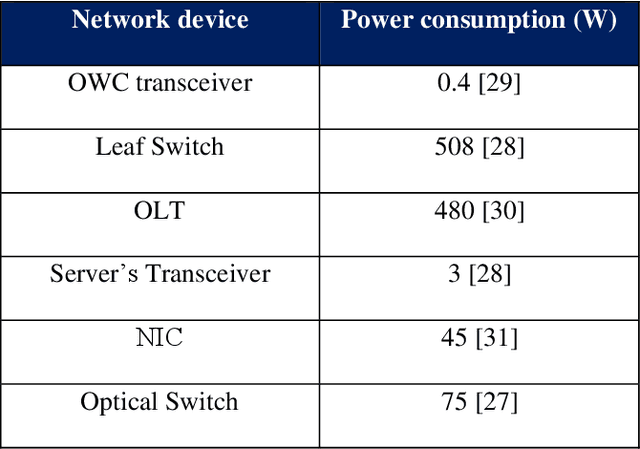

Abstract:In this paper, we propose incorporating Optical Wireless Communication (OWC) and Passive Optical Network (PON) technologies into next generation spine-and-leaf Data Centre Networks (DCNs). In this work, OWC systems are used to connect the Data Centre (DC) racks through Wavelength Division Multiplexing (WDM) Infrared (IR) transceivers. The transceivers are placed on top of the racks and at distributed Access Points (APs) in the ceiling. Each transceiver on a rack is connected to a leaf switch that connects the servers within the rack. We replace the spine switches by Optical Line Terminal (OLT) and Network Interface Cards (NIC) in the APs to achieve the desired connectivity. We benchmark the power consumption of the proposed OWC-PON-based spine-and-leaf DC against traditional spine-and-leaf DC and report 46% reduction in the power consumption when considering eight racks.
Deep Learning-based Power Allocation in Rate Splitting Optical Wireless Networks
Jul 17, 2023Abstract:Optical wireless communication (OWC) provides high aggregate data rates in the range of Terabits per second (Tb/s). Specifically, OWC using infrared lasers as transmitters has been considered as a strong candidate in the next generation of wireless communication. Rate splitting (RS) is a transmission scheme derived to improve spectral efficiency in dense wireless networks. In RS, the transmitted power is allocated to different messages, common and private messages, serving multiple users simultaneously, where each user can decode the desired message following a certain procedure. Moreover, two-tier precoding RS scheme has been proposed to overcome the limitations of traditional RS in multi-group scenarios. In this context, power allocation (PA) is a crucial issue, which can affect the performance of RS. Therefore, we formulate a PA optimization problem to enhance the data rates of RS-based OWC networks. However, such optimization problems are complex due to the use of different messages intended to the users. In this paper, we design and train a deep neural network (DNN) model to determine the power allocated to the messages of RS, while fulfilling the demands of users. The results show the accuracy of our trained DNN model when used in an online phase.
Rate Splitting for 6G Optical Wireless Networks
Apr 06, 2023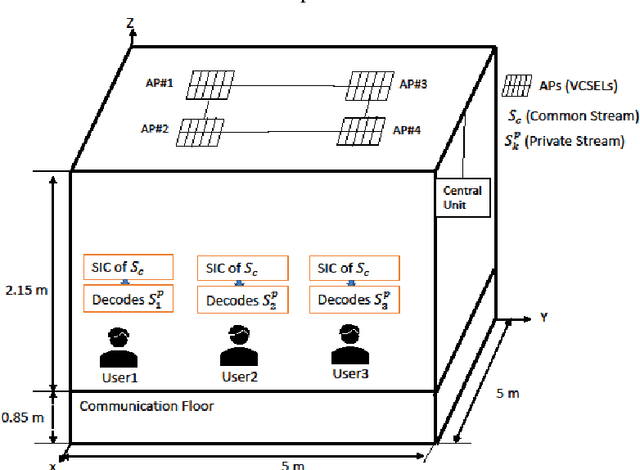

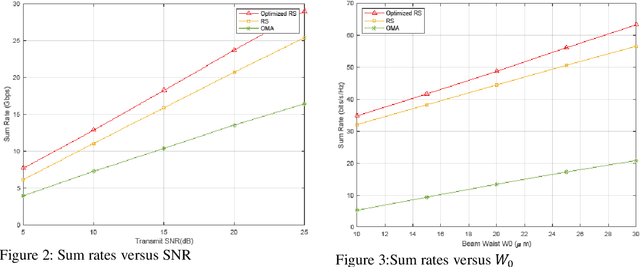
Abstract:This paper evaluates the performance of rate splitting (RS), a robust interference management scheme, in an optical wireless communication (OWC) network that uses infrared lasers referred to as vertical-cavity surface-emitting lasers (VCSELs) as optical transmitters. In 6G OWC, providing high spectral and energy efficiency requires advanced multiple access schemes that can serve multiple users simultaneously in a non-orthogonal fashion. In this context, RS has the potential to manage multi-user interference at high data rates compared to orthogonal transmission schemes. Simulation results show the high performance of RS compared to baseline approaches.
Optical Wireless Sytems for Spine and Leaf Data Center Downlinks
Nov 30, 2021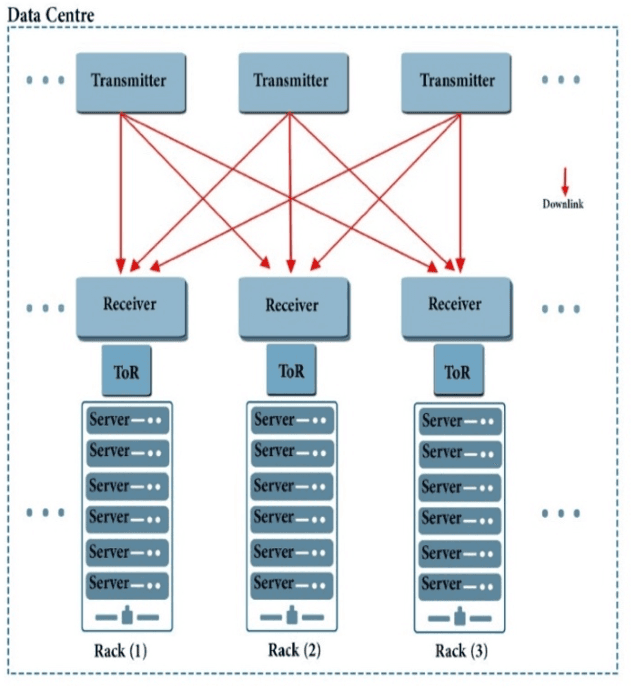
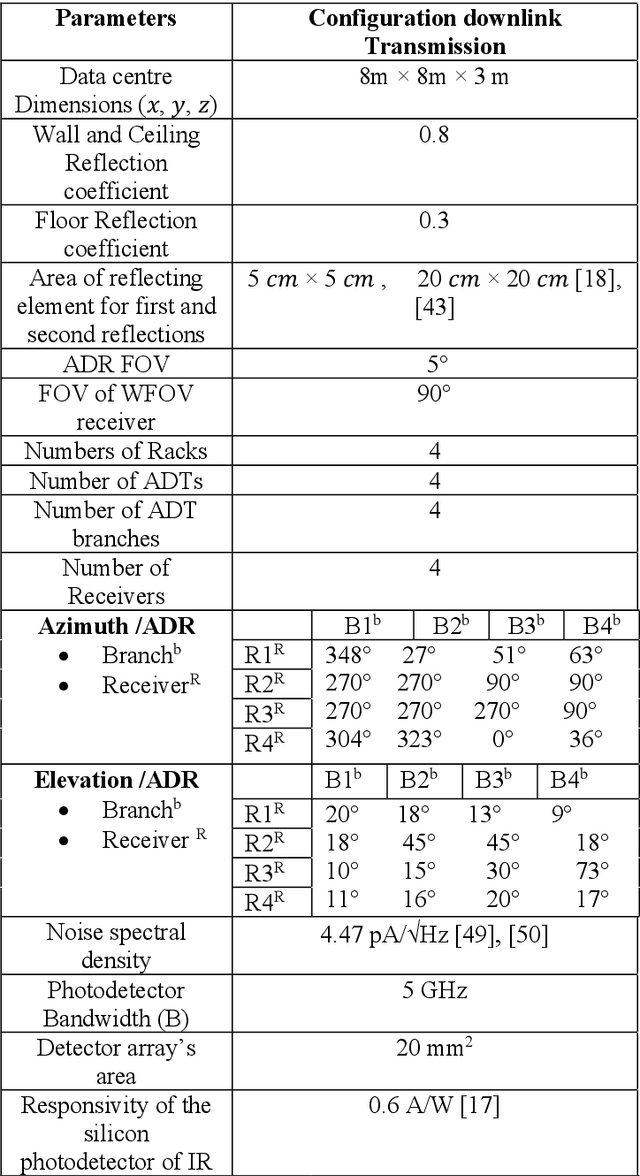
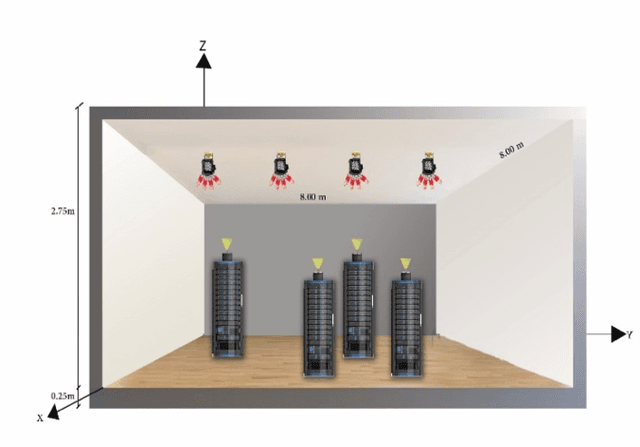
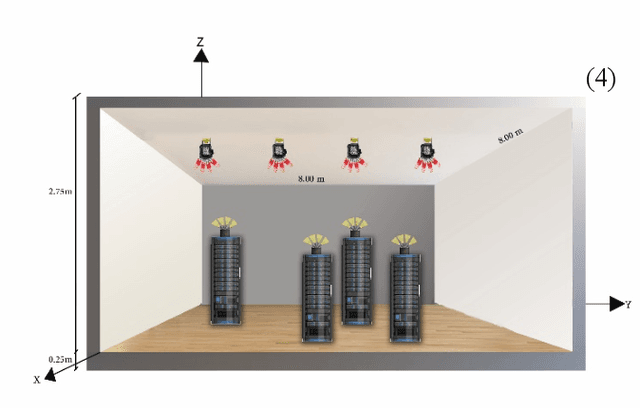
Abstract:The continually growing demands for traffic as a result of advanced technologies in 5G and 6G systems offering services with intensive demands such as IoT and virtual reality applications has resulted in significant performance expectations of data center networks (DCNs). More specifically, DCNs are expected to meet high bandwidth connectivity, high throughput, low latency, and high scalability requirements. However, the current wired DCN architectures introduce large cabling requirements and limit the ability to reconfigure data centres as they expand. To that end, wireless technologies such as Optical Wireless Communication (OWC) have been proposed as a viable and cost-effective solution to meet the aforementioned requirements. This paper proposes the use of Infrared (IR) OWC systems that employ Wavelength Division Multiplexing (WDM) to enhance the DCN communication in the downlink direction; i.e. from Access Points (APs) in the ceiling, connected to spine switches, to receivers attached to the top of the racks representing leaf switches. The proposed systems utilize Angle Diversity Transmitters (ADTs) mounted on the room ceiling to facilitate inter-rack communication. Two different optical receiver types are considered, namely Angle Diversity Receivers (ADRs) and Wide Field-of-View Receivers (WFOVR). The simulation (i.e. channel modeling) results show that our proposed data center links achieve good data rates in the data centre up to 15 Gbps.
Angle Diversity Trasmitter For High Speed Data Center Uplink Communications
Oct 29, 2021



Abstract:This paper proposes an uplink optical wireless communication (OWC) link design that can be used by data centers to support communication in spine and leaf architectures between the top of rack leaf switches and large spine switches whose access points are mounted in the ceiling. The use of optical wireless links reduces cabling and allows easy reconfigurability for example when data centres expand. We consider three racks in a data center where each rack contains an Angle Diversity Transmitter (ADT) positioned on the top of the rack to realize the uplink function of a top-of-the-rack (ToR) or a leaf switch. Four receivers are considered to be installed on the ceiling where each is connected to a spine switch. Two types of optical receivers are studied which are a Wide Field-of-View Receiver (WFOVR) and an Angle Diversity Receiver (ADR). The performance of the proposed system is evaluated when the links run at data rates higher than 19 Gbps. The results indicate that the proposed approach achieves excellent performance using simple On-Off Keying (OOK)
 Add to Chrome
Add to Chrome Add to Firefox
Add to Firefox Add to Edge
Add to Edge